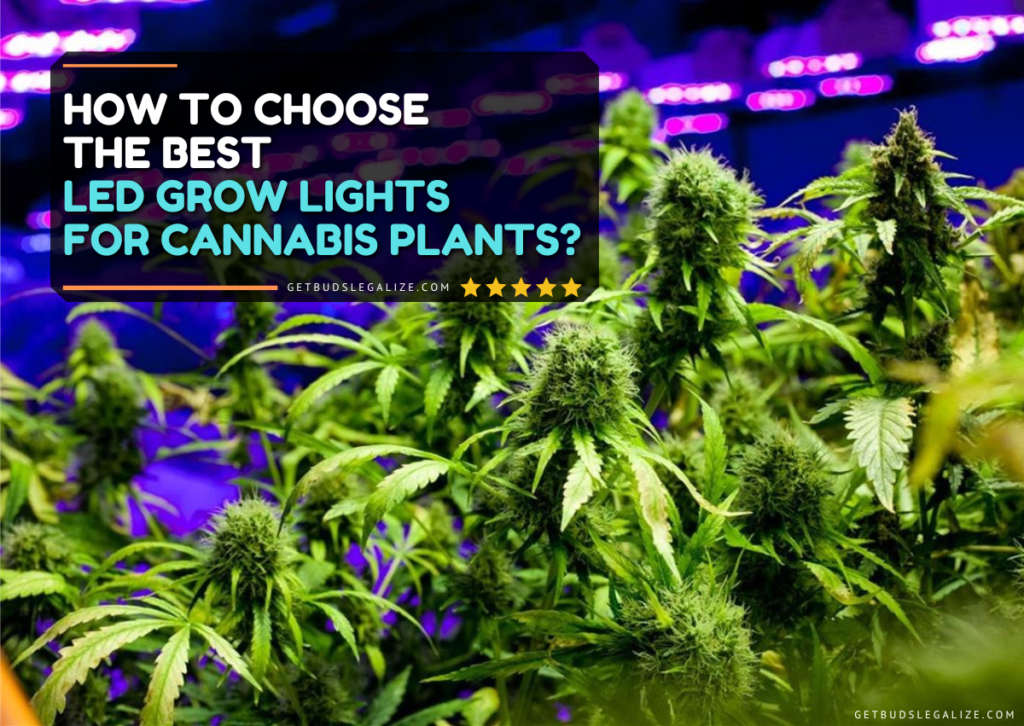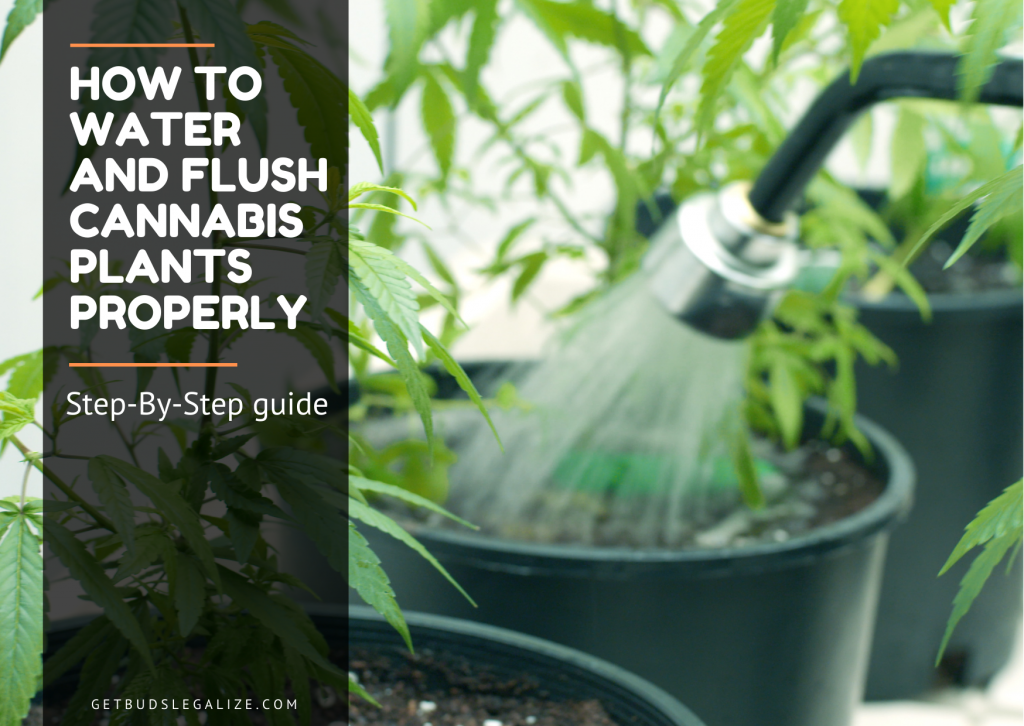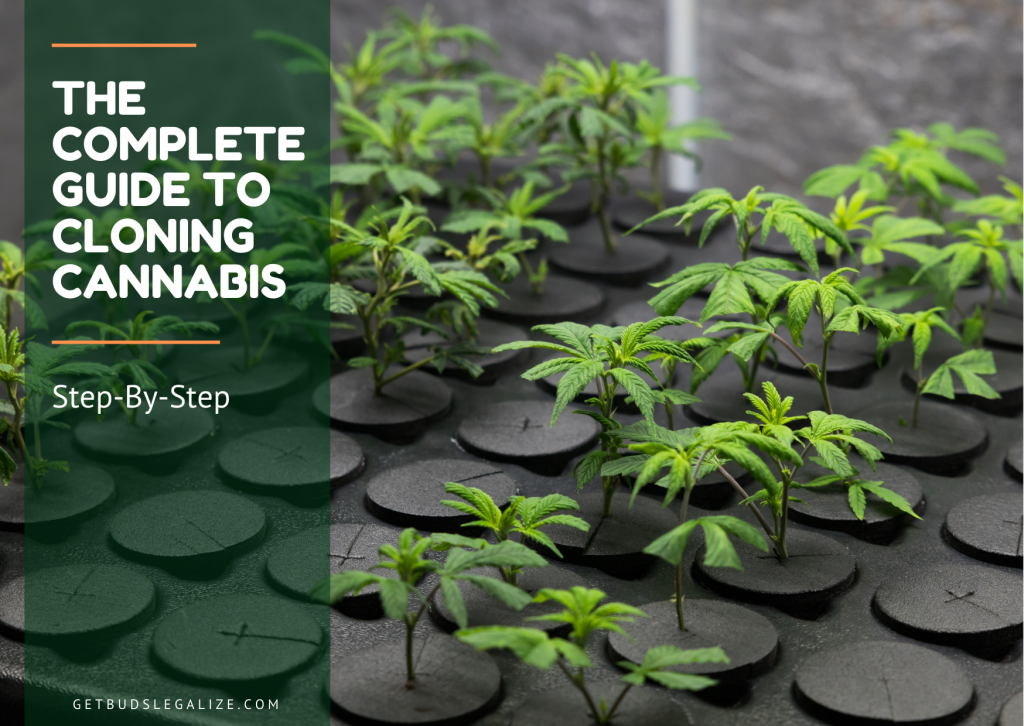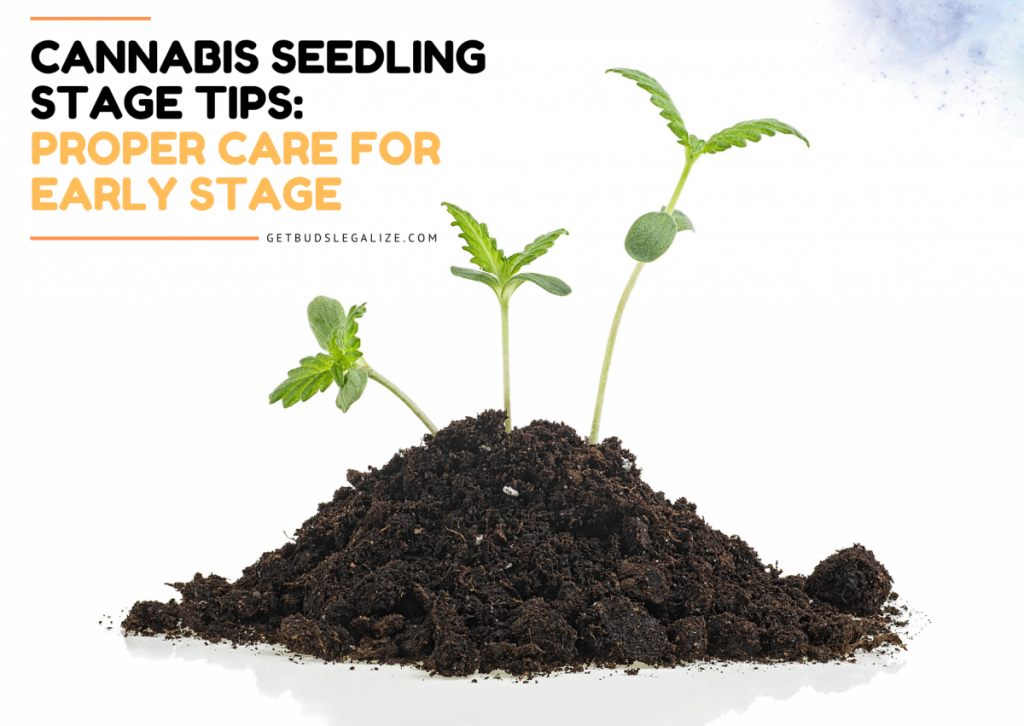How to Choose The Best LED Grow Lights for Cannabis Plants?
If you are growing cannabis indoors, you might be wondering what kind of light is best for your plants. LEDs are a popular choice among many growers because they offer several advantages over other types of lights, such as HID or fluorescent.
But not all LED lights are created equal. You need to consider some factors when choosing the best LED lighting for your grow tent, such as wattage, PAR, PPFD, spectrum, and other features. Here is a brief explanation of each factor and why it matters for your plants.
1. Wattage
One of the main advantages of LED is that they consume less electricity than other types of lights, such as HID or fluorescent. However, this does not mean that you can ignore the wattage or consumption of energy. The wattage indicates how much power the light draws from the outlet, while the energy consumption indicates how much electricity the light actually uses to produce light. You want to choose a light that has high energy efficiency, meaning that it produces more light per watt of electricity. This will save you money on your electricity bill and reduce your environmental impact.
As a rule of thumb, you should provide about 30 to 40 watts per square foot of growing space for your plants. This means that if you have a 4×4 feet grow tent, you will need a LED light with at least 480 to 640 watts of power. However, this is only a rough estimate and may vary depending on the type and quality of your LED light and the strain and stage of your plants.
2. PAR
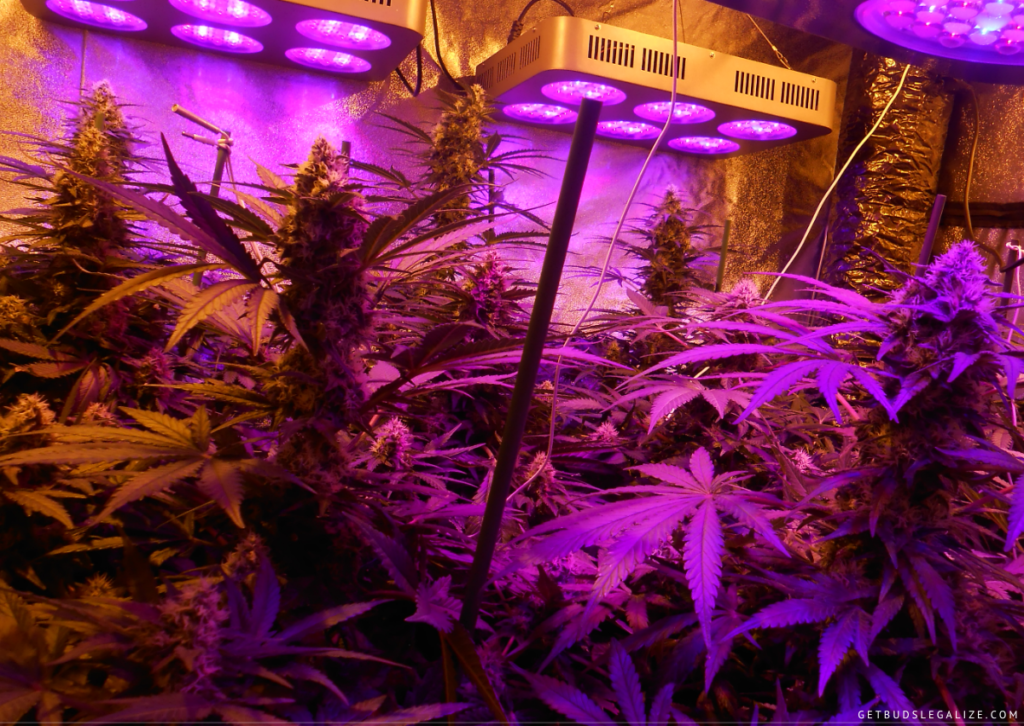
PAR stands for photosynthetically active radiation, which is the range of light wavelengths that plants use for photosynthesis. It is measured in micromoles per second (µmol/s) and it indicates how much light energy is available for your plants to use.
PAR is not the same as lumens or lux, which are measures of how bright the light is to the human eye. Plants perceive light differently than humans, so you need to focus on PAR rather than lumens or lux when choosing an LED grow light.
The higher the PAR value, the more light energy your plants can absorb and use for growth. However, PAR alone does not tell you how evenly or efficiently the light is distributed over your growing space. For that, you need to look at another factor: PPFD.
3. PPFD
PPFD stands for photosynthetic photon flux density, which is the amount of PAR that reaches a certain point on your plant canopy per second. It is measured in micromoles per square meter per second (µmol/m2/s) and shows how much light each plant receives from your grow light. PPFD varies depending on the distance and angle of the light source, as well as the shape and size of your grow space.
The higher the PPFD value, the more light your plants receive and the faster they can grow. However, there is a limit to how much PPFD your plants can handle before they get stressed or burned. This limit depends on the strain, stage, and environment of your plants, but generally speaking, most marijuana plants can tolerate up to 1000 µmol/m2/s during flowering. You should aim for a PPFD value that matches the needs and capabilities of your plants without exceeding them.
To measure PPFD accurately, you need a PAR meter. You should also check the PPFD map or chart provided by the manufacturer of your LED light, which shows how much PPFD each area of your growing space receives at different distances from the light source.
4. Light Spectrum
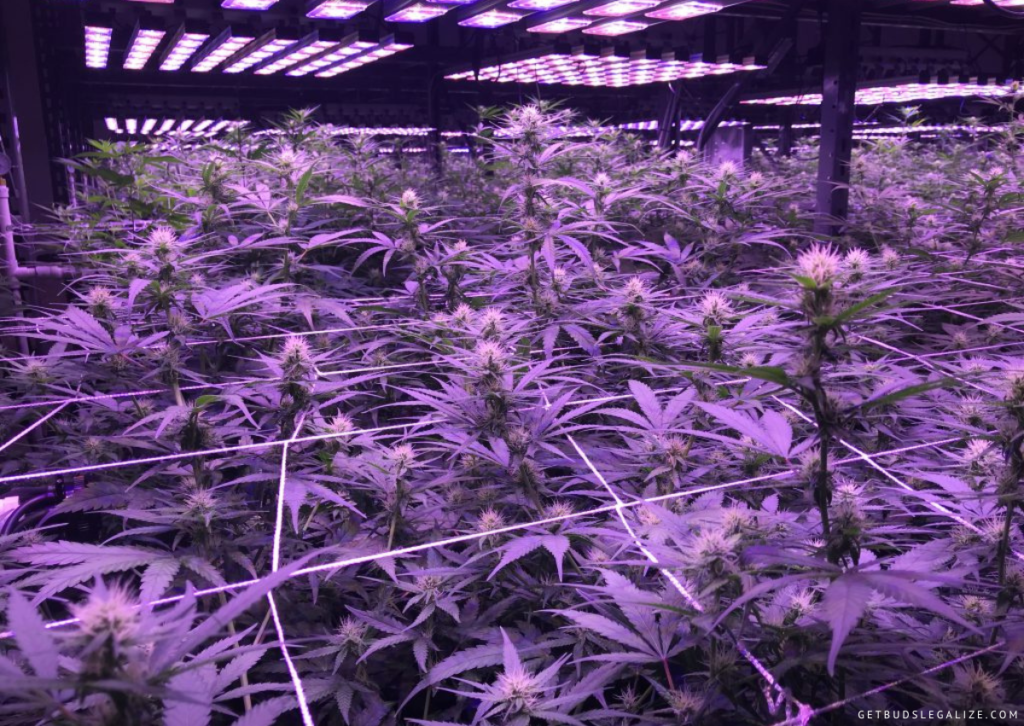
Spectrum refers to the color and quality of the light produced by your cannabis grow light. Different colors and wavelengths of light have different effects on your plants’ growth and development. For example, blue spectrum stimulates vegetative growth by reducing cell expansion and increasing leaf mass. Red spectrum promotes flowering by triggering the production of hormones that initiate bud formation. UV light enhances oil production and cannabinoid synthesis by mimicking natural sunlight.
The best spectrum for your spectrum plants depends on their stage and strain, as well as your personal preference. Some growers prefer full-spectrum light that emits all colors and wavelengths of light from UV to infrared, just like natural sunlight. Others prefer a targeted spectrum LED light that focuses on specific colors and wavelengths that are optimal for cannabis growth.
Full-spectrum lights have several benefits over targeted spectrum ones, such as:
- They produce more natural-looking buds with better flavor and aroma.
- They allow you to use one type of light throughout all stages of growth, without having to switch or adjust the spectrum.
- They mimic the sun’s natural light cycle, which can improve the health and resilience of your plants.
However, full-spectrum lights also have some drawbacks, such as:
- They are more expensive than targeted spectrum ones because they use more types and quantities of LEDs.
- They may not be as efficient or effective as targeted spectrum ones, because they emit some light that is not useful or beneficial for your plants.
Ultimately, the choice between full-spectrum and targeted spectrum lights depends on your budget, goals, and preferences. You should experiment with different spectrums and see what works best for your plants and your style of growing.
5. Quality

Quality is another important factor to consider when choosing a grow light for marijuana plants. Quality refers to the durability, reliability, and performance of the light. A high-quality LED light will last longer, produce more consistent results, and have fewer issues than a low-quality one.
One way to assess the quality of an LED light is to look at the brand reputation and customer reviews. Some well-known and trusted brands in the LED grow light industry are California Lightworks, Gavita, Mars Hydro, Spider Farmer, and Viparspectra. You can also check online forums and social media platforms where growers share their experiences and opinions about different lights.
Another way to evaluate the quality is to look at the specifications and characteristics of the light. Some key specs and features to look for are:
- The type and number of LEDs: LEDs are small diodes that emit light on an LED panel. There are different types of LEDs, such as SMD (surface-mounted device), COB (chip-on-board), or quantum board. SMD LEDs are the most common type and consist of individual diodes mounted on a circuit board. COBs are clusters of diodes that form a single chip that emits more intense light than SMD LEDs. Quantum-board LEDs are arrays of SMD LEDs that cover a large surface area and produce more even light distribution than COBs.
- The power supply or driver: The power supply or driver is the device that converts AC (alternating current) electricity from your wall outlet into DC (direct current) electricity that powers your LEDs. A high-quality power supply or driver will ensure that your LEDs receive stable and sufficient voltage and current without overheating or burning out.
- The cooling system: The cooling system is the device that dissipates heat from your LEDs and prevents them from overheating and degrading. A high-quality cooler will have a large heat sink, which is a metal plate that absorbs heat from the LEDs, and a fan, which is a device that blows air to cool it. Some LED lights are fanless and rely on passive cooling, which means they use natural air circulation to cool down the heat sink. Fanless LED lights are quieter and more energy-efficient than fan-cooled LED lights, but they may not be as effective at cooling down high-wattage LEDs.
- The warranty and customer service: The warranty and customer service are the guarantees and support that the manufacturer or seller provides for your LED light. A high-quality LED light will have a long warranty period, which is the time that the manufacturer or seller will repair or replace your light if it malfunctions or breaks down. A high-quality LED light will also have good customer service, which means that the manufacturer or seller will respond to your inquiries, complaints, or feedback in a timely and professional manner.
6. Other Features

Besides the factors mentioned above, there are some other features that you may want to consider when choosing an LED light for your marijuana grow, such as:
•Dimmable:
This feature allows you to adjust the intensity of your light according to the needs and stage of your plants. For example, you can dim the light during seedling or cloning to prevent overexposure or stress. You can also dim the light during flowering to simulate sunrise and sunset, which can enhance the quality and yield of your buds.
•Programmable:
This feature allows you to set a timer or a schedule for your light to turn on and off automatically. This can save you time and energy, as well as ensure a consistent and optimal light cycle for your plants.
•Remote Control:
This feature allows you to control your light from a distance using a remote device, such as a smartphone or a tablet. This can make it easier and more convenient for you to monitor and adjust your LED light without having to access your grow space physically.
•Daisy Chain:
This feature allows you to connect multiple lights together using a single power cord or outlet. This can reduce the clutter and hassle of wiring, as well as save you space and money.
•COB:
COB stands for chip on board, which is a type of LED that consists of multiple small LEDs mounted on a single substrate. They are more compact, powerful, and efficient than regular LEDs because they have less space between them and produce less heat. However, they are also more expensive and harder to replace than regular LEDs.
•UV/IR:
UV stands for ultraviolet and IR stands for infrared, which are two types of light that are invisible to the human eye but visible to plants. UV light can enhance the oil production and cannabinoid synthesis of your plants by mimicking natural sunlight. IR light can increase the leaf temperature and metabolism of your plants by penetrating deeper into the tissue. However, both UV and IR light can also be harmful to your plants if used excessively or improperly.
These features are not essential for growing cannabis with LED, but they can add some value and convenience to your growing experience. You should weigh the pros and cons of each feature and decide whether they are worth the extra cost and complexity.
What Is The Difference Between COB and Regular LEDs?

As mentioned above, COB LEDs are clusters of diodes that form a single chip that emits more intense light than SMD LEDs, which are individual diodes mounted on a circuit board. The main difference between COB and regular LEDs is their PAR value, footprint, and efficiency.
- PAR value: COBs have a higher PAR value than regular LEDs, which means they produce more usable light for plants per watt of electricity. This can result in faster growth and higher yields for marijuana plants.
- Footprint: COBs have a smaller footprint than regular LEDs, which means they take up less space on an LED panel than regular LEDs. This can result in more even light distribution and less hot spots.
- Efficiency: COBs have lower efficiency than regular LEDs, which means they convert less electricity into light and more into heat. This can result in higher electricity costs and higher cooling needs for cannabis growers.
Bottom line
Choosing the best LED grow lights for cannabis plants is not an easy task, but it can make a huge difference in the quality and quantity of your harvest.
Remember that there is no one-size-fits-all solution when it comes to LEDs. You should experiment with different settings and options and see what works best for your indoor plants and growing style.
We hope this guide has helped you understand how to choose the best LED for your cannabis plants. Happy growing!
FAQs about led grow lights for cannabis
The optimal distance between your LED and your plants depends on the wattage and intensity of your light, as well as the stage of growth of your plants. Generally speaking, higher-wattage lights should be hung farther away from the plants.
Using LED for your cannabis cultivation has many advantages, such as:
- Energy efficiency: LEDs consume less electricity than other types of grow lights, which can save you money on your energy bills.
- Longevity: LED can last up to 50,000 hours or more, which means you don’t have to replace them as often as other types of grow lights.
- Versatility: LED allows you to adjust the spectrum, intensity, and photoperiod of the light according to your plants’ needs. You can also use them in different spaces and setups, such as tents, closets, or greenhouses.
- Quality: LED can produce high-quality buds with rich flavors, aromas, and potency. This is because they can provide your plants with the full spectrum of light they need for optimal growth and development.
Using LED lights for optimal results requires some planning and adjustment, such as:
- Hanging height: This is the distance between the LED and the top of your plants. A proper hanging height can ensure even light distribution and optimal light penetration. You should adjust the hanging height according to the size and stage of your plants, as well as the specifications of your light. A general rule of thumb is to hang your light 18-24 inches above your plants during the vegetative, and 12-18 inches above your plants during the flowering stage.
- Light cycle: This is the duration of the light on and off periods per day. A proper light cycle can ensure the optimal growth and development of your plants. You should adjust the light cycle according to the stage and strain of your plants, as well as the specifications of your light. A general rule of thumb is to provide your plants with 18-24 hours of light per day during the vegetative stage, and 12 hours of light per day during the flowering stage.
- Light intensity: This is the brightness or strength of the light emitted by the light. Proper light intensity can ensure optimal photosynthesis and yield of your plants. You should adjust the light intensity according to the stage and strain of your plants, as well as the specifications of your light. A general rule of thumb is to provide your plants with 400-600 µmol/m2/s of PAR during the vegetative stage, and 600-1000 µmol/m2/s of PAR during the flowering stage.
Light intensity is measured by PPFD (photosynthetic photon flux density), which is the amount of light that reaches a certain area per second. Different plants have different PPFD requirements depending on their species and growth stage.
For example, low-light plants such as ferns and prayer plants need around 100 PPFD, while high-light plants such as tomatoes and peppers need around 800 PPFD.
To adjust the light intensity for your plants, you can use one or more of these methods:
- Change the distance between your light and your plants. As mentioned earlier, moving your LED closer or further away from your plants can increase or decrease the light intensity accordingly.
- Change the wattage or spectrum of your light. Some LED lights allow you to change the wattage or spectrum of the light by using a controller or a switch. This way, you can adjust the amount and quality of light that your plants receive.
- Change the duration or cycle of your light. You can also adjust the light intensity by changing how long or how often you turn on your LED. For example, you can increase the light intensity by extending the photoperiod (the number of hours of light per day) or decrease the light intensity by shortening the photoperiod.
If you have a small space for your indoor growth, you need to choose an LED light that is compact, efficient, and suitable for your plants. Here are some factors to consider when choosing the best cannabis grow lights for a small space:
- The size and shape of your LED grow light. You want to choose an LED that fits your space and covers your plants evenly. You can opt for a panel, bar, or bulb depending on your preference and layout. You can also use multiple smaller LED grow lights instead of one large one to distribute the light better.
- The wattage and spectrum of your LED light. You want to choose an LED that provides enough light and heat for your plants without wasting energy or causing problems. You can opt for a low to medium-wattage LED light (200-400 watts) that has a full spectrum or a customized spectrum for your plants.
- The features and accessories of your LED light. You want to choose an LED that has some useful features and accessories that make your life easier and your plants happier. For example, you can look for an LED light that has a dimmer, a timer, a fan, a heat sink, a reflector, or a hanging kit.
Some examples of led grow lights for cannabis good for small spaces are:
• Medicgrow Fold 8 Full Spectrum. This is a foldable panel LED grow light that has 8 bars and covers 2×4 feet of space. It has a wattage of 480 watts and a spectrum of 3000K, 5000K, 660nm, and 730nm. It also has a dimmer and a timer.
• Spider Farmer SF-1000 Full Spectrum. This is a panel LED grow light that covers 2×2 feet of space. It has a wattage of 100 watts and a spectrum of 3000K, 5000K, 660nm, and 760nm. It also has a dimmer and a heat sink.
• SANSI 36W Full Spectrum. This is a bulb LED grow light that covers 1.5×1.5 feet of space. It has a wattage of 36 watts and a spectrum of 400-780nm. It also has a ceramic body and an E26 base.
If you are planning to grow cannabis indoors, you might be wondering which type of light is better for your plants: high pressure sodium (HPS) or metal halide (MH) lamps, or light-emitting diodes (LEDs). There are pros and cons for each option, depending on your budget, space, and goals. Here are some factors to consider when choosing indoor grow lights.
HPS/MH lamps are the traditional choice for indoor growers, as they provide high-intensity light that can mimic the sun. They are also relatively cheap and easy to find. However, they also have some drawbacks, such as:
- They consume a lot of electricity and generate a lot of heat, which can increase your energy bills and require additional cooling and ventilation systems.
- They have a shorter lifespan than LEDs and need to be replaced more often.
- They can produce a yellowish or reddish light spectrum, which may not be optimal for all stages of plant growth.
LEDs are a newer technology that has become more popular among indoor growers in recent years. They offer some advantages over HPS/MH lamps, such as:
- They are more energy-efficient and produce less heat, which can save you money and reduce the risk of overheating or burning your plants.
- They have a longer lifespan than HPS/MH lamps and do not need to be replaced as frequently.
- They can produce a full-spectrum light that can be customized to suit different stages of plant growth.
However, LEDs also have some disadvantages, such as:
- They are more expensive than HPS/MH lamps upfront, and may not be available in all sizes or wattages.
- They may not penetrate as deeply into the plant canopy as HPS/MH lamps, which can affect the yield and quality of your buds.
- They may require more research and experimentation to find the best settings and configurations for your grow tent.
Ultimately, the best type of light for your indoor cannabis grows depends on your personal preferences, budget, space, and goals. You may want to try both options and compare the results, or use a combination of both. The most important thing is to provide your plants with enough light intensity and duration to promote healthy growth and flowering.
ILGM Fertilizer

- From seedling to harvest, give your plants everything they need.
- Enough for feeding at least 5 plants.
- Discounted Package Deal
- Works well in soil, hydroponics, and other growing mediums.
- The best way to treat your plants
ILGM Plant Protector

- Protect your cannabis from diseases and harmful pests.
- Contains three 20 ml bottles.
- Enough supplies to protect 20 plants.
- It can be used in soil, hydroponic, and all other growing mediums.

